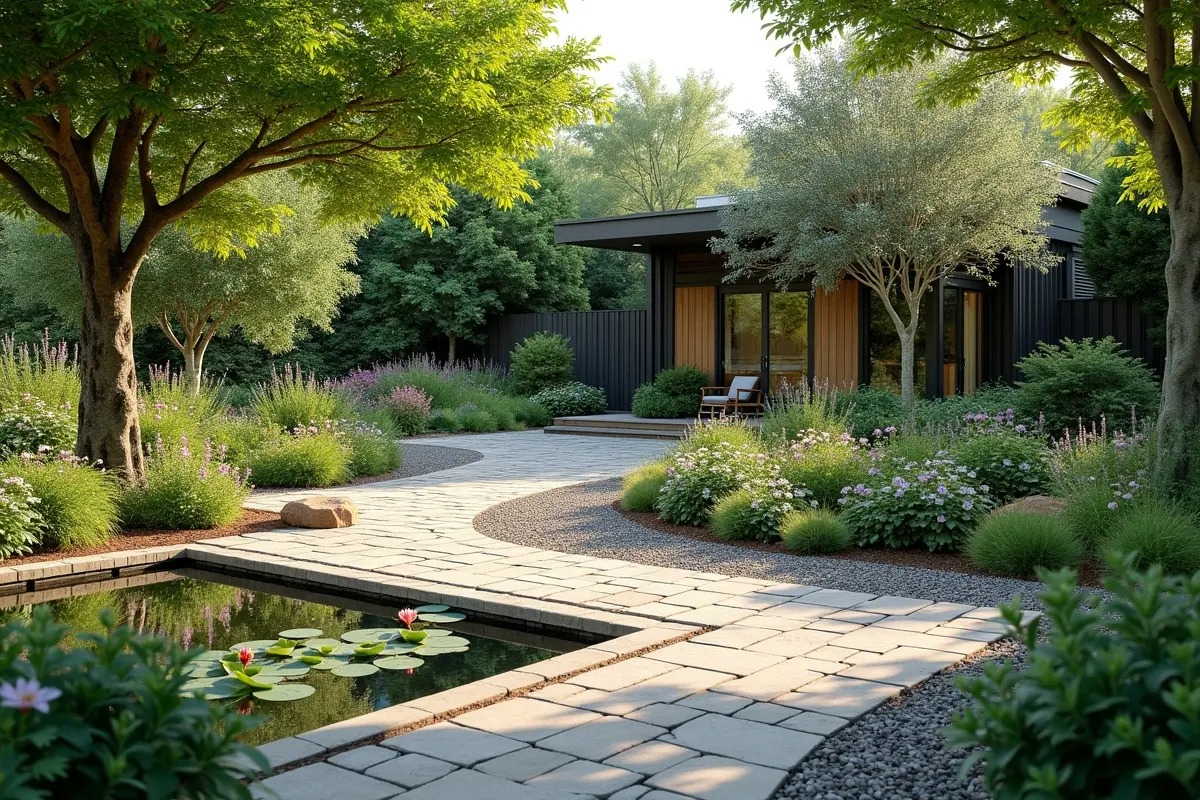Designing an eco-friendly landscape isn’t just about creating a visually beautiful outdoor area—it’s an investment in a healthier future for people and the planet. By adopting sustainable landscape strategies, you can develop a space that supports both local wildlife and your community while minimizing waste and resource use.
Thoughtful choices in plant selection and landscaping materials are at the core of developing a vibrant, resilient garden that contributes to broader environmental health. To get started on your sustainability journey, consider working with specialists like Mountain Goat Landscape LLC, who can help you integrate the best environmentally-friendly practices for your region and property.
A sustainable garden reduces maintenance headaches over time and protects your investment by building healthy soil, promoting biodiversity, and conserving water. These gardens thrive in sync with nature, offering habitats for local wildlife and inspiring your neighbors to make greener choices. The following tips will help you plan, design, and maintain a landscape that adds beauty while prioritizing eco-conscious principles.
Choose Native and Drought-Tolerant Plants
Native plants lie at the heart of every sustainable landscape. Because these species have evolved within your area’s climate, they’re naturally resistant to pests, diseases, and drought. This compatibility means a reduced reliance on external resources, such as supplemental watering and synthetic fertilizers. For example, in arid climates, plants such as sagebrush or yarrow require minimal irrigation but still attract pollinators and offer visual interest.
Native species also support local wildlife, providing food and shelter for birds, insects, and small mammals, which in turn bolsters the region’s ecological balance. According to the National Audubon Society, integrating native vegetation is one of the most significant steps gardeners can take to make an immediate, positive environmental impact.
Implement Efficient Irrigation Systems
Over-irrigation is one of the most common contributors to water waste in residential landscapes. Instead of relying on traditional sprinklers, consider installing drip irrigation or soaker hoses, which deliver water directly to a plant’s root zone. This targeted delivery significantly reduces evaporation loss, helping your plants benefit from every drop.
Smart irrigation controllers, integrated with sensors or weather data, further reduce waste by adjusting schedules based on rainfall and temperature. Regularly check for leaks or broken emitters to ensure your system remains effective and resource-efficient. For further guidance on optimizing irrigation, the EPA’s WaterSense program offers resources and tools specifically designed for homeowners.
Incorporate Permeable Hardscaping Materials
The choice of hardscape materials significantly impacts how water flows through your landscape. Traditional concrete and asphalt surfaces can create runoff and flooding problems. Still, permeable alternatives—such as interlocking pavers, gravel, or porous concrete—allow rainwater to seep into the ground, thereby reducing these issues.
This helps recharge groundwater while reducing pressure on storm drains and waterways. Incorporating gravel or permeable pathways means less pooling afterwards, as well as a more naturally integrated look. Creative stone designs and mosaics further ensure that sustainability pairs beautifully with functionality.
For an illustrated look at eco-friendly hardscaping, check out this useful overview from Enviroscape Landscape Construction.
Use Organic Compost to Enrich Soil
Healthy soil is the foundation of any sustainable garden. Composting at home transforms kitchen scraps, grass clippings, and leaves into nutrient-rich humus—a natural alternative to chemical fertilizers. As you apply compost, you enrich soil texture and fertility, supporting robust plant growth and improving water retention.
Mulching garden beds with composted material also suppresses weeds and gives your yard a finished, well-tended appearance. Not only does composting divert waste from landfills, but it also helps your plants thrive naturally.
Design for Energy Efficiency
Sustainable landscape design is about more than just the garden bed—it can also help regulate your home’s temperature and energy needs. Deciduous trees are especially effective when planted on the southern and western sides of your house; they provide shade during hot summers and allow sunshine through in colder months, reducing the need for artificial heating and cooling.
Likewise, dense shrubbery can act as a windbreak during winter, further shielding your property from the elements and lowering utility bills. Thoughtful planting transforms your landscape into a living energy saver.
Reduce Lawn Areas
While traditional lawns have their charm, they’re among the most resource-intensive features in landscape design, requiring frequent watering, mowing, and fertilization. Reducing lawn space in favor of native groundcovers, ornamental grasses, or flower beds lessens maintenance needs and promotes biodiversity.
Replace portions of turf with a wildflower meadow, a pebble garden, or a clover patch to add texture and color that also attracts beneficial insects, such as bees and butterflies.
Provide Habitat for Wildlife
Sustainable gardens support a noticeable increase in wildlife by providing food, water, and shelter. Birdhouses, bee hotels, and small ponds or water bowls invite native species, creating a vibrant, restorative ecosystem right in your backyard.
Utilize a diverse range of plant types and layers—from groundcovers to trees—to replicate natural habitats and enhance local biodiversity. Avoid pesticides to preserve populations of pollinators and predatory insects, naturally balancing the ecosystem.
Use Sustainable Materials
Environmental stewardship extends to the materials you choose for paths, walls, and features. Repurposing reclaimed wood, salvaged bricks, or recycled glass reduces the ecological footprint of your landscape project and gives old items new life. Recycled composite materials can create durable, appealing surfaces for decks, benches, and fences, blending functionality with sustainability.
By embracing these sustainable landscaping tips, you support a garden that’s as kind to the planet as it is beautiful to enjoy—a win-win for you and future generations.




